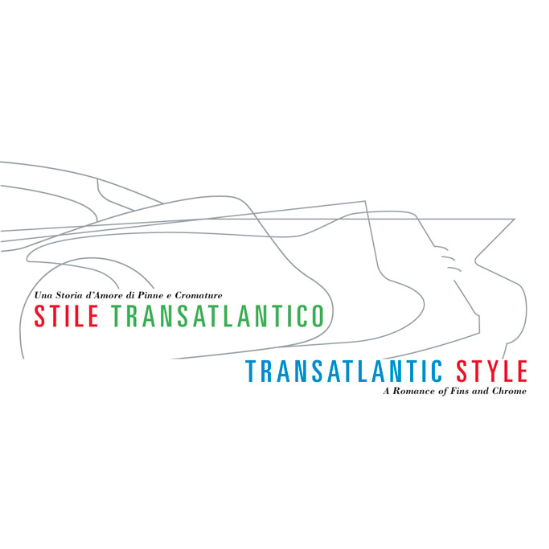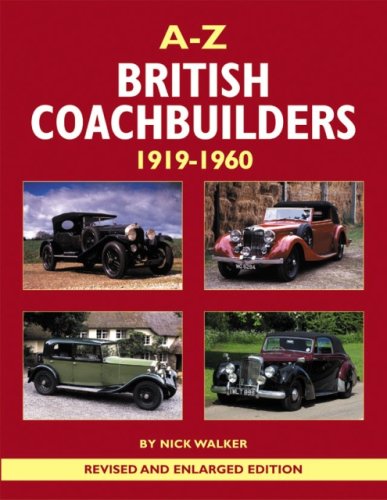
Coachbuilding on motor car chassis evolved from carriage building, and the development of the coachbuilt body closely followed that of the motor car. From the beginning of the 20th century until the arrival in the late 1930s of unitary construction for motor cars, in which the separate chassis and body gave way to a combined body/chassis structure, coachbuilding flourished in Britain, with hundreds of firms exhibiting their latest designs at motor shows year after year. But by the outbreak of World War 2, the industry was already in terminal decline. Many coachbuilders, like Barker or Hooper built one-off bodies for the `carriage trade’, the noble and wealthy who sought the distinction of choosing a style of body and interior to suit their personal tastes and requirements, and such bodies were naturally to be found on the most expensive makes of motor car, like the Rolls-Royce, Bentley and exotic marques from the Continent. Other coachbuilders aimed to produce inexpensive bodies in series for volume manufacturers who wanted, for example, to be able to offer a convertible version of a certain model but did not wish to have to make the bodies themselves. Yet others established a special relationship with a single manufacturer, like Charlesworth with Alvis, in order to procure a steady flow of work. This book is a comprehensive study of coachbuilding, and coachbuilders, in Britain. The author sets the scene by describing advances in fashions and techniques of coachbuilding in separate chapters on the 1920s, 1930s and the postwar period. He then gives a unique A-Z coverage of more than 300 British coachbuilders. In addition, there is a chapter offering useful advice on assessing the condition, and likely repair needs, of a coachbuilt body today. A glossary of coachbuilding terms and what they mean completes the picture. More than 400 photographs, 50 of them in color, have been painstakingly hunted down to illustrate coachbuilding fashions and methods as well as the work of the coachbuilders described in the A-Z section. This new enlarged and revised edition features brand new entries
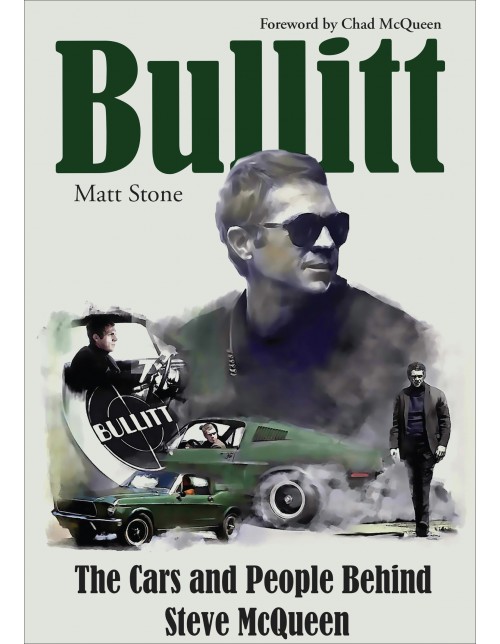
Get the behind the scenes view of arguably the most iconic automotive movie car and scene in history.
Ask any automotive enthusiast what his or her favorite chase scene to appear in a movie is, and the majority will respond with “Bullitt.” It has made the top 5 in every list covering the best automotive chase scenes in history. But the appeal isn’t just about the chase scene.
Shot entirely on location in picturesque San Francisco in 1968, the movie not only features the historic chase scene but also many outdoor scenes filled with cars and architecture of the period that are filmed in crisp clear color. The movie was the fifth-highest-grossing film for 1968, it was well received by critics, and the chase scene won Franks P. Keller an Oscar for editing.
In Bullitt: The Cars and People Behind Steve McQueen, you will get the complete behind the scenes picture of how all the action was coordinated and filmed. Included are the ideas behind the making of the movie, an interview with Director Peter Yates, production stills, and the planning for the scene. Also covered is the cast, the building of the cars used in the film, and the how and why the stunts were choreographed and filmed. To round out the story, an examination of what happened to the cars is included as well as coverage of the multiple Bullitt Edition cars released by Ford after the film, including the latest 2019 edition.
While several books have been published about Steve McQueen, the “King of Cool,” never before has there been a thorough examination of this specific film and these specific cars. This edition is a welcome addition to the library of any McQueen, Mustang, or automotive film history fan.

The long and successful cooperation between Porsche and the Stuttgarter Karosseriewerk Reutter & Co. GmbH was, right from its beginning, more than just a marriage of convenience. It was based on mutual sympathy of two unique companies within the automotive industry.
In 1931 the Reutter coachwork company, founded in 1906, started building prototypes of what would later be known as Volkswagen on behalf of the Porsche engineering office. In 1949 Porsche gave the order to Reutter to produce 500 bodies for the Porsche sports car, and around Easter time 1950 the first Porsche 356 ever to be constructed in Germany was finished in Reutter’s factory I. Porsche bought ground from Reutter within the plot of its factory II in order to build a new construction site for manufacturing motors. At the same time Reutter moved the complete bodywork to factory II in Zuffenhausen and from that moment most of the legendary Porsche 356 were manufactured in intensive cooperation and side by side.
Besides those vehicles made by hand in serial-production Porsche 356 presents many prototypes and special cars made for Porsche up to the point of collective evolution of the later called Porsche type 911.
The book’s focus is on the description of the development of a Porsche 356-body, colorfully illustrated and detailed as never before. Much of the material used was taken from the Reutter-family archive. Previously unpublished documents and pictures were found in several institutional and private archives, especially the archive of Porsche itself.
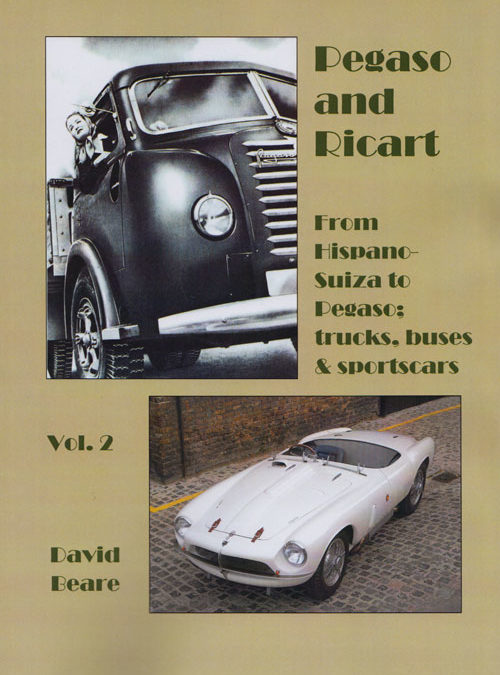
The second volume of the Hispano-Suiza and Pegaso books
The book covers the career of Catalan engineer Wifredo Ricart and his early designs and creations of the 1920s and 1930s in Spain- (Ricart y Peréz 1922-26), S.A. Automóviles Ricart (1926-28) and Ricart España (1928-30). Ricart then moved to Italy and was employed by Alfa Romeo as a consultant engineer from 1936 to 1945, where he was involved in the design and building of the Alfa Romeo Tipo 162 V-16 and the mid-engined flat-12 Tipo 512 racing cars, only for WWII to interrupt developments, so neither car was raced. It was during this period that Ricart clashed with Enzo Ferrari, who was racing-team manager for Alfa Romeo at the time.
In the early war years Ricart designed and built the extraordinary 28-cylinder 2,000bhp Tipo 1101 Alfa Romeo aero-engine, which had seven banks of four cylinders and was exceptionally light and compact.
Ricart, accompanied by a small group of loyal Italian engineers and ex-collegues, left Alfa Romeo and chaotic Italy in 1945 and returned to Barcelona. They were recruited by the government of Generalissimo Franco to create a new truck-building company, Pegaso, to produce desperately-needed trucks and buses for Spain, which they did with great success, designing and developing a number of modern industrial vehicles. Most of this took place in the ex- Hispano-Suiza factory in Barcelona, taken over by the government for this purpose, complete with the highly-skilled and experienced workforce which had previously built Marc Birkigt’s Hispano-Suiza T-35 aero-engines.
Part of Ricart’s remit was to educate and train a new generation of Spanish engineers, technicians and mechanics able to deal with modern technologies being used throughout Europe, but which were sorely lacking in Spain. The astonishingly advanced Pegaso Z-102 and Z-103 sportscars of 1951-1957 were in part the result of this training program, giving hands-on experience to legions of apprentices and enhancing Spain’s prestige as a new motor-manufacturing nation.
Only 86 Pegaso sportscars were made in total before Ricart was ordered to desist and concentrate on trucks and buses again by a reactionary management under political control. The political, social and economic influences which dictated Spain’s progress through the post-civil war era of 1939-1960 are also studied as they are important backgrounds to the evolution of the Pegaso company.
Mainly Spanish sources have been used to give an accurate picture of events leading up to Ricart’s creation of the legendary Pegaso sportscars and their subsequent careers in motorsport or on the Concours d’Elégance circuits. Many Z-102s have survived, despite determined efforts by Pegaso management in the late 1950s to erase them from the company’s history. Pegaso sportscars are now highly-prized worldwide.
A4 format, soft covers, 117 pages with colour and b/w images throughout, mostly contemporary with the period.
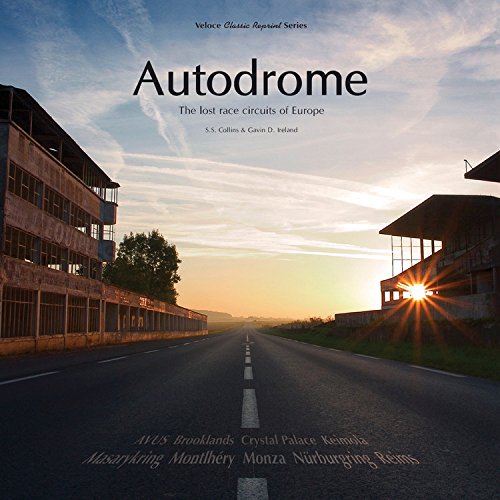
Around Europe lie a number of long forgotten monuments, windswept and abandoned, the derelict buildings and crumbling tarmac are all that remain of once great motor racing circuits. From the great speed-bowls of Monza and Brooklands, to the parkland of Crystal Palace, this evocative book features both historical pictures, as well as stunning contemporary photography of the circuits as they are now.

The Italian coachbuilding industry is something unique in the world. Amazing cars, incredible creativity and construction mastery that are impossible to find elsewhere, combined with an unbelievable number of people and companies that have been working for more than a century.
This book, the result of a detailed and huge research lasted many years, covers for the first time with the due historiographic method all the protagonists of this very interesting story. In fact, behind the most famous names, there are hundreds of other companies, workshops, craftsmen, designers that allowed such a big network to develop. The author and his team have been able to list little less than one thousand different entities, the wide part of which was totally forgotten and is re-discovered for the first time after decades.
The book is also introduced by a foreword written by the renowned designer Leonardo Fioravanti and a text by Umberto Eco.
The book is made by 2 large size volumes in slipcase, enriched by more than 3000-period pictures and is the ultimate reference, essential for car styling enthusiasts and automotive historians.
The manufacturing quality is as high as the contents, with a fine printing on heavy matt coated paper and a luxury hardcover in metallic paper.
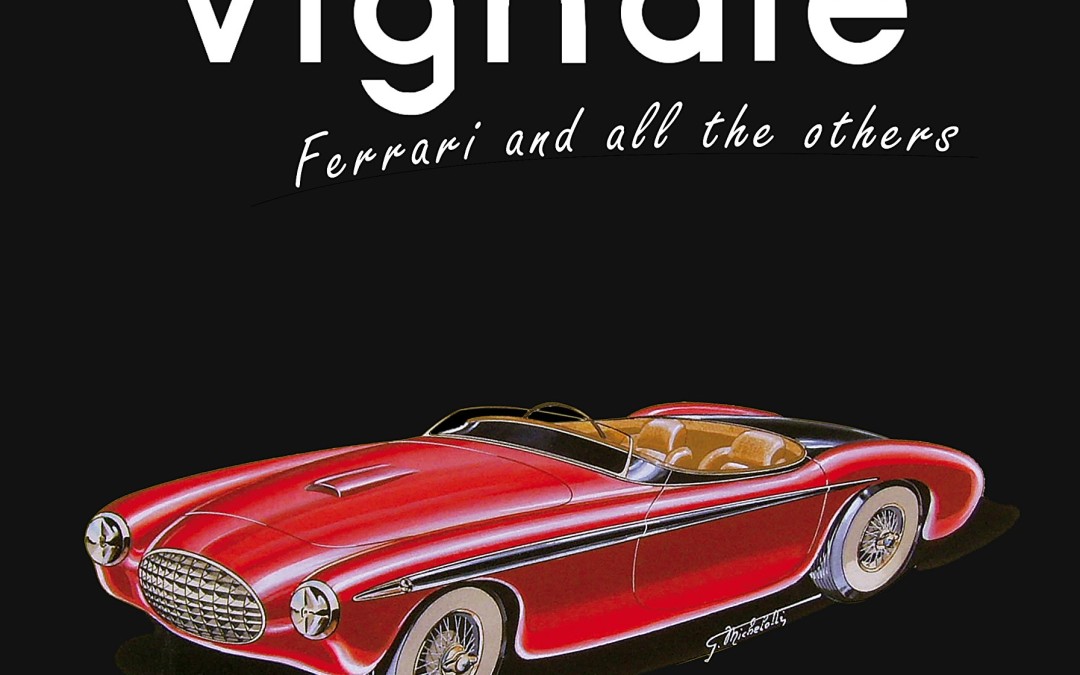
Alfredo Vignale was one of the most illustrious names in the Italian art of the carrozzeria. In twenty years he built countless models, from the early Ferraris to series production of Lancia, Fiat and Maserati cars. Coachbuilder, industrialist, collaborator with brands like Cunningham, Opel, Daihatsu, Jensen, Tatra, he covered the whole arc of the Italian coachbuilding industry, from the post-war boom to the crisis years of the 1960s.
This books recounts his whole personal and professional history.
312 pages
More than 520 b/w and color pictures
Italian and English text

In his three previously-published books, Composite Materials: Fabrication Handbooks, Volumes 1-3 Author and Professor John Wanberg, took pains to explain the why and how of building with composite materials. Each page was allocated equally between photos and text.
In this new book of step-by-step projects, John takes a different approach. Instead of explaining the theory and what each component is made of, John cuts to the chase. Nearly every page is allocated to photos.
The pictures lead the reader through a detailed how-to sequence. From making the mold, to cutting the fabric, and finishing the part, all the information is here. Projects include everything from fabricating speaker enclosures to hood scoops and cell-phone cases. Some require only simple molds, while others rely on more sophisticated vacuum bagging methods.
Each chapter starts with copy, just enough to explain the project and the goals. Next comes the material panel: a list of all the tools and materials needed to duplicate the project seen in that particular chapter. Finally, the vast majority of each chapter is filled with the how-to photos. Photos that literally show each step along the way, from the initial sketch to the finished part.







